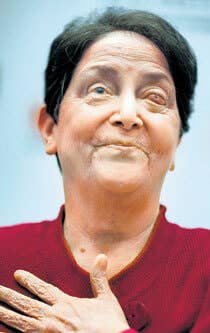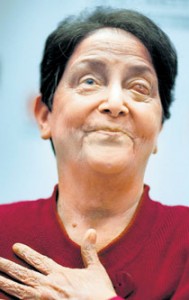Tooth Transplanted into Eye Helps Cure Blindness

Share

When you are blind and trying to restore your sight, you'll try anything. I mean, anything. US doctors have recently returned a woman's vision by using a transplanted tooth to help anchor a telescope in her eye. That's right, a tooth. The procedure took several surgeries at Bascom Palmer Eye Institute in Miami, but it has given Kay Thornton her vision back after nine years of blindness. Check out the clip from NBC Today Show (via Hulu) after the break, apologies for the commercial.
Part of what is remarkable about this surgery is that it's actually more than 40 years old. Modified osteo-odonto keratoprosthesis (MOOKP) was developed in Italy in the 1960s. It's been performed around 600 times worldwide, but Thornton is the first US patient. Unlike corneal transplants, MOOKP does not require donor matching as all the tissue comes from the patient herself.
Unlike the other telescope implants we've discussed, the MOOKP telescope is simply correcting corneal damage. The rest of the eye is healthy. In Ms. Thornton's case, the cornea was scarred due to lack of moisture stemming from Stevens-Johnson syndrome.
As described in the video, the MOOKP procedure takes place in several parts. First, a tooth and section of the jaw is removed and filed down to hold the telescope. The assembly is planted under the skin for a period and a skin graft from the cheek is placed over the eye. This step allows the tooth bone to bind to the telescope, and for the skin graft to keep the eye moist.
https://www.hulu.com/edp/http%3A%2F%2Fwww%2Ehulu%2Ecom%2F/embed/f28N27YbclU1JJMe2VhyvQ
Be Part of the Future
Sign up to receive top stories about groundbreaking technologies and visionary thinkers from SingularityHub.


The tooth is then extracted and placed on the eye (allowing the telescope to pass light onto the retina) and the skin graft covers the eye again to keep everything lubricated. The graft can be further covered by a cosmetic shell (shown in the video diagram). It appears Thornton is not using a shell at this time as you can see the fleshy pink graft in some of the video.
MOOKP has never been used in the US due to its lack of testing and concerns over safety. Corneal transplants have taken its place for a majority of prospective patients. I'm not sure whether Thornton's case is a special one, or if the Miami based surgical team will continue to perform the procedure. There seem to be few risks associated with the technique beyond tooth loss and the general risks assigned to corneal surgery.
Perhaps the big lesson here is that good surgeries never die. When a medical technique is extreme and strange, it has a low chance for widespread adoption. Still, if the procedure works, and it can't be done in a different way, it will eventually develop a following. 600+ patients have tried to restore sight with the help of a tooth, and now that the US has a success to point to, that number could climb even higher. It makes you wonder what other procedures have waited 40 years to make it to the US, or the world, and how we might be benefit if they saw wider use.
Related Articles

This Light-Powered AI Chip Is 100x Faster Than a Top Nvidia GPU

This Week’s Awesome Tech Stories From Around the Web (Through December 20)

Data Centers in Space: Will 2027 Really Be the Year AI Goes to Orbit?
What we’re reading